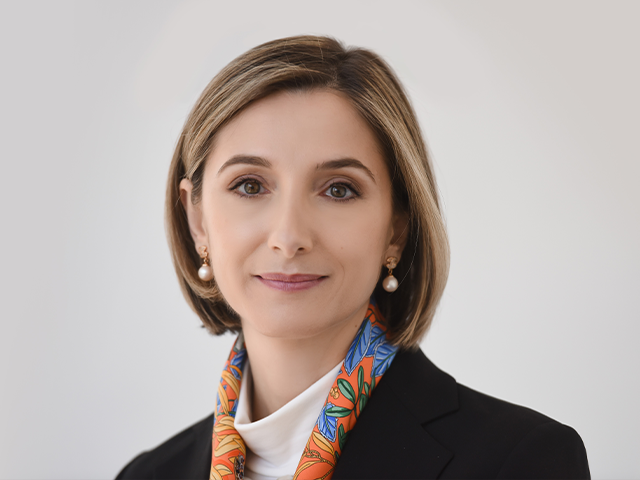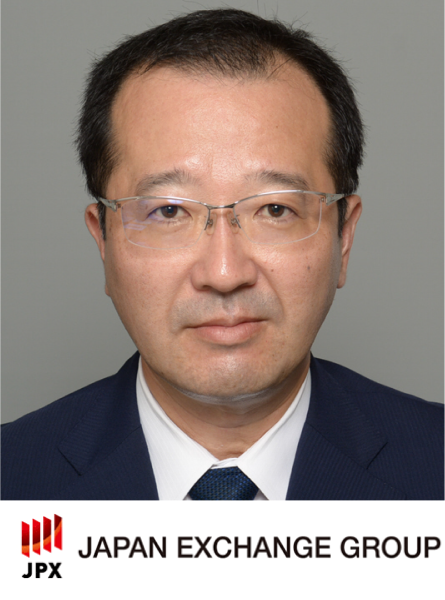#
RepRisk interviews Alessia Falsarone, Head of Sustainable
Investing DMFI, Chair, Corporate Responsibility Steering Committee at PineBridge Investments
1. RepRisk: Could you please provide some insight into your specific role at PineBridge and share a bit about PineBridge’s approach to ESG?
Alessia Falsarone: I am responsible for designing and driving the developed markets fixed income team’s sustainability agenda by providing subject matter expertise, guiding the day-to-day portfolio-level investment decisions involving ESG dimensions, and aligning the team’s traditional portfolio strategy and investment risk processes. I have also strengthened our coverage of global green, social and sustainability bond markets, including the development of the proprietary ESG evaluation framework we rely upon in bond selection. Our approach involves the outright integration of ESG considerations into our traditional portfolio allocation decisions – from in pre-investment due diligence to post investment evaluation analyses. I also serve as Chair of the firm’s Corporate Responsibility Steering Committee. While promoting the sharing of best practices, we aim at ensuring that our corporate responsibility activities follow a cohesive strategy – the same way investors expect from investee companies.
2. RR: How have you seen the conversations you’re having about ESG change over the last few years, both internally (e.g. with senior management, with investment teams) and externally (e.g. your clients, other stakeholders)?
AF: Internally, I have seen renewed efforts at strengthening our own education surrounding emerging themes in the ESG investing landscape while also focusing on the changing regulatory environment we face as a global investment manager. Not surprisingly, the industry continues to transition from pure avoidance of select assets driven primarily by ethical considerations and values-based screening (think for example of the so-called “sin sectors” such as Tobacco, Alcohol, and Gambling), and all the reputational risks associated with financing such activities, to the recognition nowadays that there is a wider set of financially material ESG dimensions beyond traditional exclusions. That wider set is most likely to play a role in proactively evaluating the financial stability or operational strength of a company and its positioning in the marketplace.
Externally, I have seen the dialogue with asset owners – from early adopters of sustainable investing policies to late comers – continuing to move in the direction of partnership with the investment management community in terms of supporting initiatives that promote transparency and disclosure of ESG risks.
3. RR: How does PineBridge use RepRisk in its day-to-day business and how would you describe the value it brings you?
AF: The RepRisk ESG Risk Platform is a key enhancer to the evaluation of financially material trends in our active ESG risk exposures – both at the aggregate portfolio level as well as at the individual company level, and through the risk management lens. It enables us to drill down on individual risks by pillar and single out bond-specific sources of near-term event risk. We are able to identify issuers “at risk” at the pillar level (E, S, or G) and to review the history of an incident. The validation of the information feeds is particularly helpful as it is available by “influence” of information source (country and corporate level).
It also continues to play a key role in our ability to translate more sophisticated client-specific investment policy guidelines and compliance requirements into actionable flags. For example, the adaptability of the RepRisk Platform has enabled us to map international agreements such as CITES (the Convention on International Trade in Endangered Species of Wild Fauna and Flora) with country-level exposures to illegal trade activities, and address potential regions at risk.
4. RR: RepRisk is in the process of integrating the SASB materiality framework into its risk management and compliance solutions. A year ago, you joined the SASB Standards Advisory Group for the financial sector. Can you share your thoughts on the role of SASB, and how PineBridge uses this framework practically in its ESG integration activities?
AF: Year after year, the Sustainability Accounting Standards Board (SASB) continues to establish a vision for transparency and comparability of financially material information that bridges the information gap between investors and investee companies. We are now in the adoption phase of the standards. The launch of Standard Advisory Groups is instrumental in bringing to life an investorcorporate reporting dialogue. Using SASB’s work, I have been able to foster deeper dialogue with internal and external stakeholders and strengthen our conviction calls as traditionally labeled nonfinancial risk exposures are now fully part of pre- and post-investment analyses. It is exciting to see RepRisk integrating the SASB materiality framework into its ESG Risk Platform. I am thrilled to see that part of the process being automated!
5. RR: What do you see as the upcoming trends or emerging issues from an ESG perspective?
AF: We are finally seeing consensus on the fact that building climate-resilient investment portfolios will be a key driver of investment flows over the next decade and beyond. While we are not asked to be climate scientists, the asset management industry needs to be able to discuss and compare which environmental risks are being recognized and priced in the marketplace. We also need to leverage a common toolkit to quantify the negative externalities associated with climate. While the industry is rushing to report toward measurable goals, we have yet to define what progress looks like according to what measures. The role of regulatory bodies and the industry dialogue with public-policy makers on this topic will be a key enabler of the industry delivering upon those premises.
Conclusion
PineBridge Investments mainly uses RepRisk to evaluate financially material trends related to ESG issues at the portfolio level as well as at the individual company level. The qualitative information in the RepRisk ESG Risk Platform allows PineBridge to evaluate in detail the risk incidents related to a company as well as its historic risk exposure. Furthermore, RepRisk supports PineBridge in translating investment policy guidelines into actionable flags.
Bio – Alessia Falsarone
Alessia Falsarone, SASB FSA is a Managing Director in the Global Fixed Income team at PineBridge Investments in New York, a private, global asset manager focused on active, high-conviction investing. As Head of Sustainable Investing and Chair of the firm’s Corporate Responsibility Steering Committee, she brings an integrated portfolio management lens to the investigation of the Environmental, Social and Governance practices of global organizations that access developed credit markets.
Previously, Ms. Falsarone served as Vice President of Global Investments in the office of the CIO at Citigroup, and as a quantitative strategist on Citigroup’s institutional research desk in San Francisco. She started her career as an investment banker with Credit Suisse. Ms. Falsarone is a Governance Fellow of the National Association of Corporate Directors and an active member of several technical expert groups including the Standards Advisory Group of the Sustainability Accounting Standards Board (SASB), the Advisory Council of the Green and Social Bonds Principles, and the UN PRI Advisory Committee on ESG in Credit Risk and Ratings. Ms. Falsarone is an alumna of Stanford University, the MIT Sloan School of Business, and the Bocconi University School of Economics.



